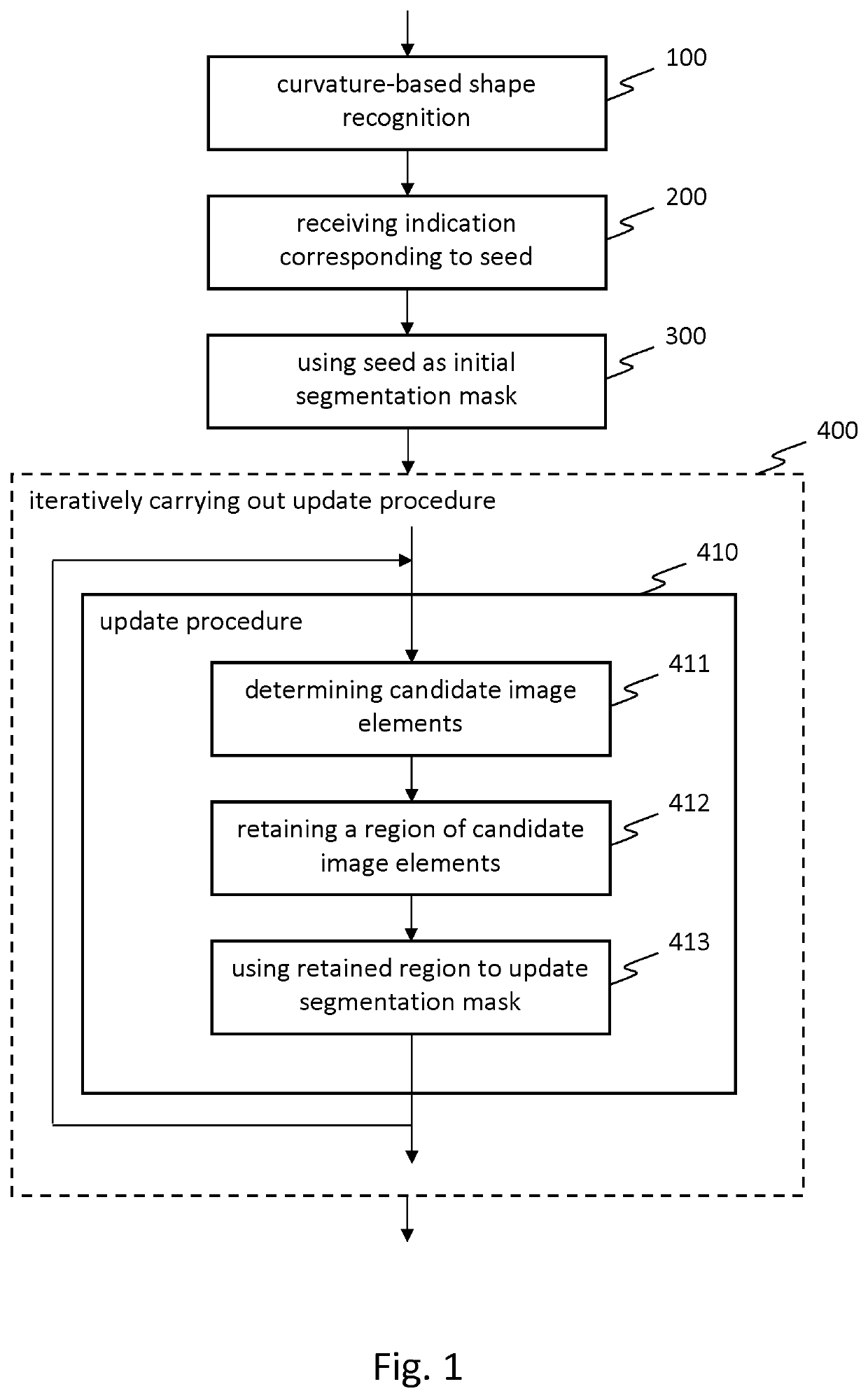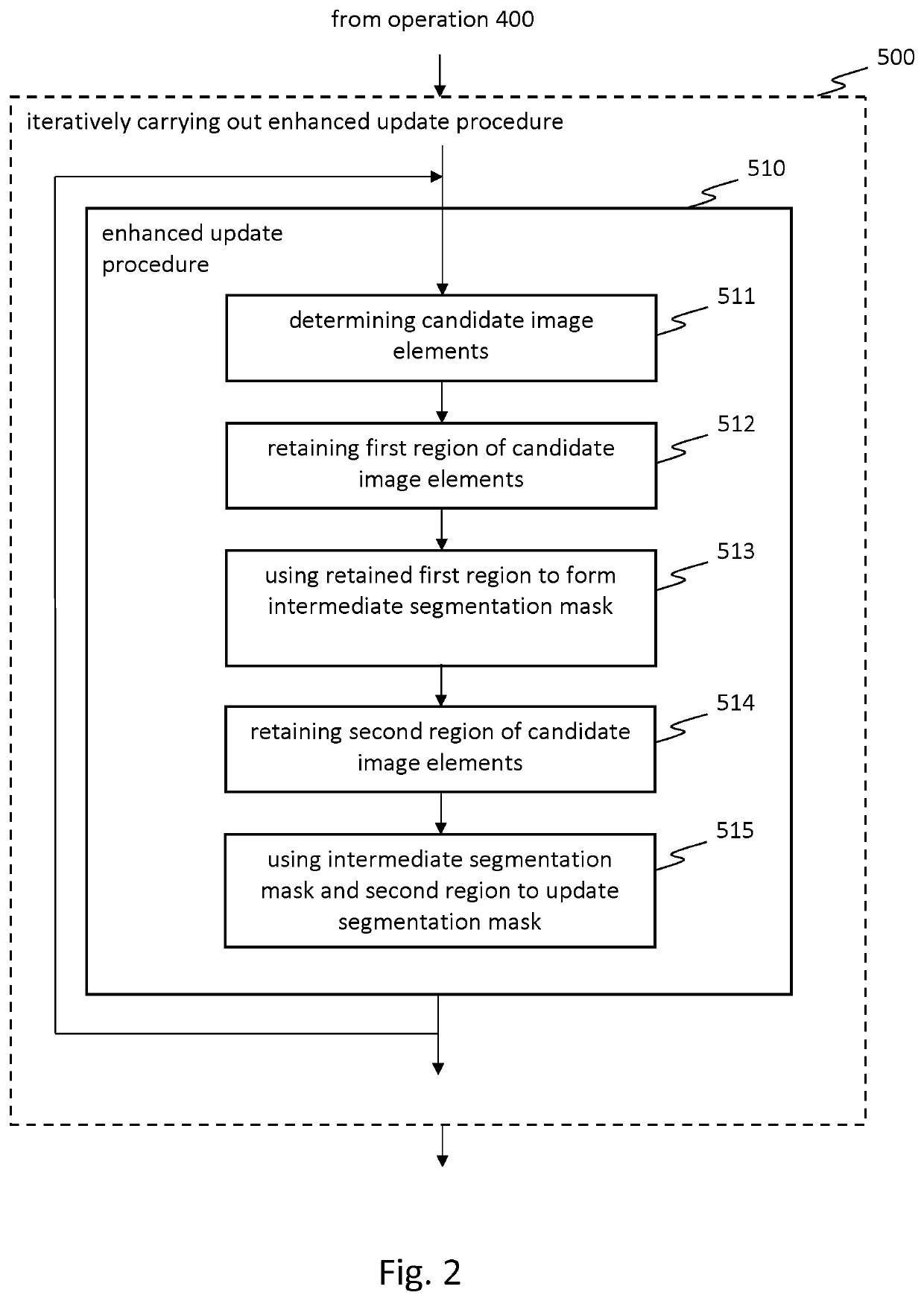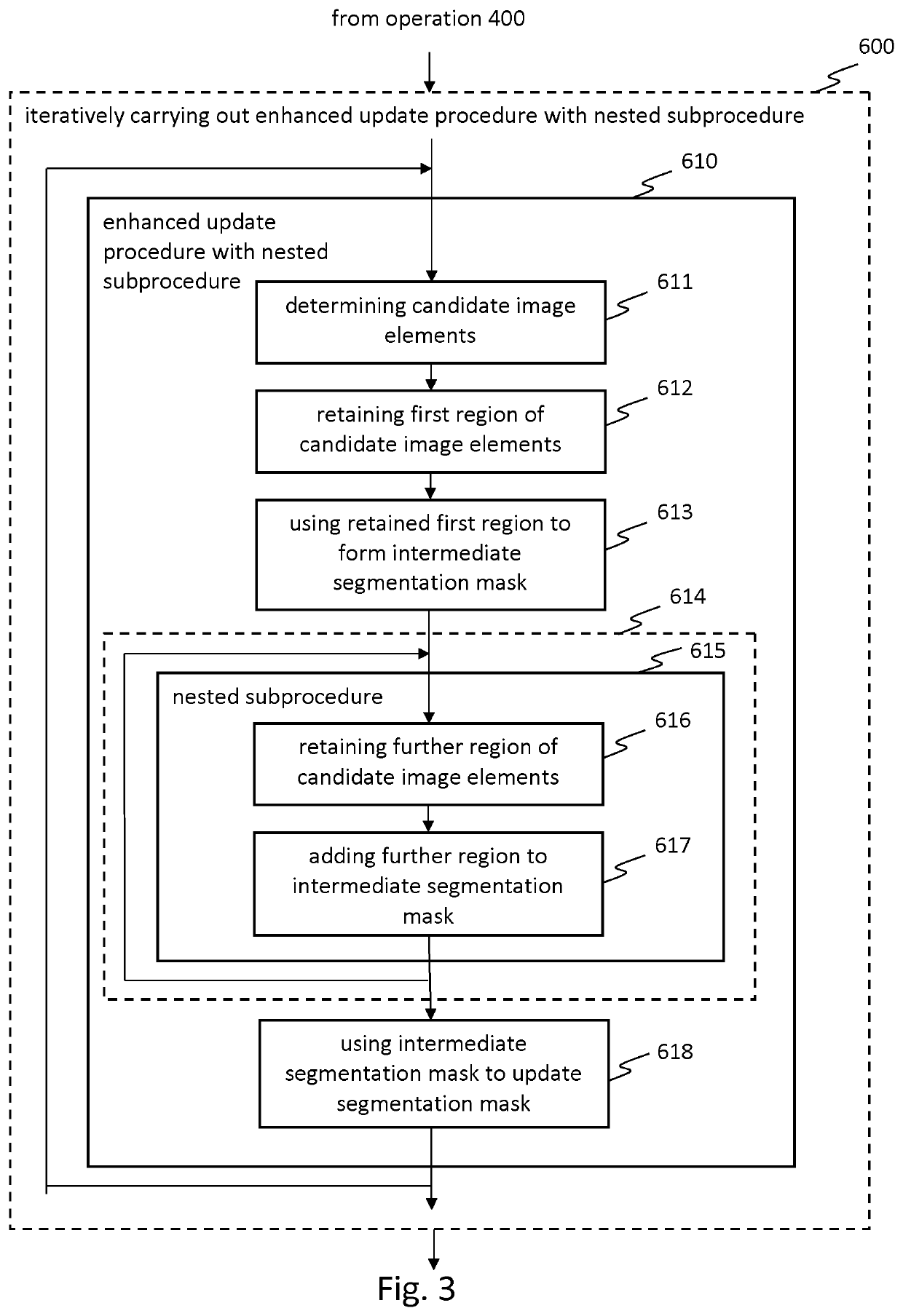Methods, systems, and computer programs for segmenting a tooth's pulp region from an image
a technology of tooth pulp and image, applied in image enhancement, medical/anatomical pattern recognition, instruments, etc., can solve the problems of pulp death, jaw bone loss, tooth loss, etc., and achieve the effect of convenient and precise planning of endodontic treatmen
- Summary
- Abstract
- Description
- Claims
- Application Information
AI Technical Summary
Benefits of technology
Problems solved by technology
Method used
Image
Examples
Embodiment Construction
[0032]The present development shall now be described in conjunction with specific embodiments. These specific embodiments serve to provide the skilled person with a better understanding, but are not intended to in any way restrict the scope of the development, which is defined by the appended claims. A list of abbreviations and their meaning is provided at the end of the detailed description.
[0033]FIG. 1 is a flowchart of a method in one embodiment of the development. The method is computer-implemented. That is, the method may be carried out by a computer or set of computers, although the development is not limited thereto. The method may also be implemented, as a form of computer-implemented method, using hardware electronic circuits, e.g. with field-programmable gate arrays (FPGA), or using a combination of computer(s) and hardware electronic circuits.
[0034]The method aims at segmenting a tooth's pulp region from a 2D or 3D image of said tooth. The pulp region comprises a pulp cha...
PUM
 Login to View More
Login to View More Abstract
Description
Claims
Application Information
 Login to View More
Login to View More - R&D
- Intellectual Property
- Life Sciences
- Materials
- Tech Scout
- Unparalleled Data Quality
- Higher Quality Content
- 60% Fewer Hallucinations
Browse by: Latest US Patents, China's latest patents, Technical Efficacy Thesaurus, Application Domain, Technology Topic, Popular Technical Reports.
© 2025 PatSnap. All rights reserved.Legal|Privacy policy|Modern Slavery Act Transparency Statement|Sitemap|About US| Contact US: help@patsnap.com



